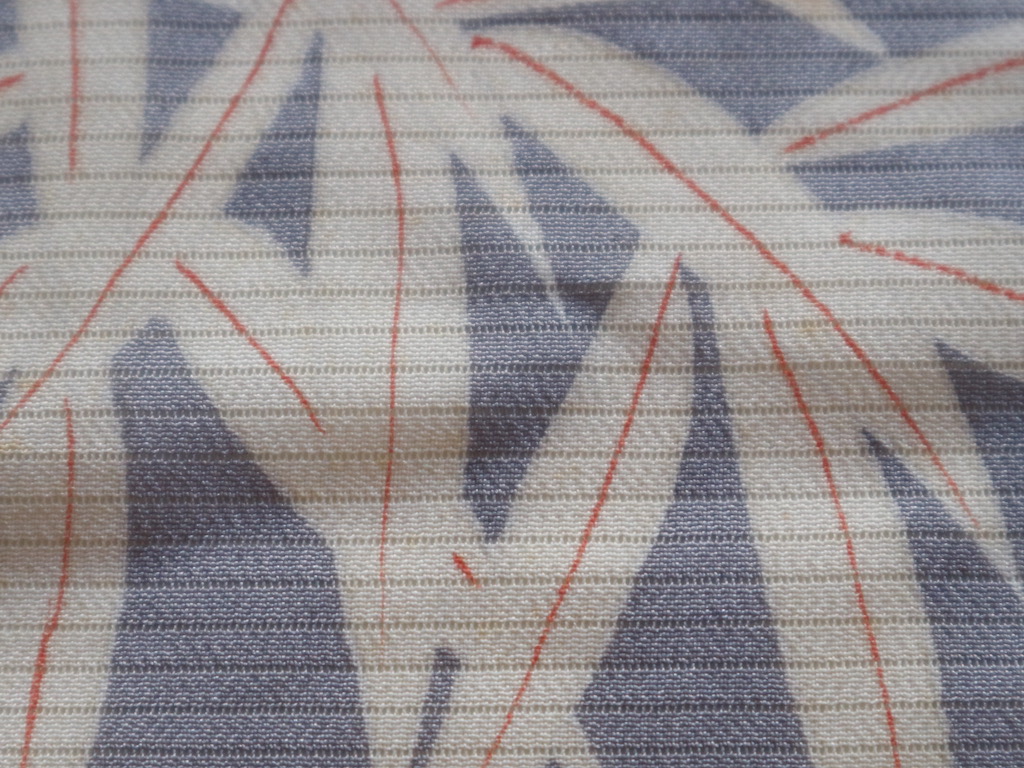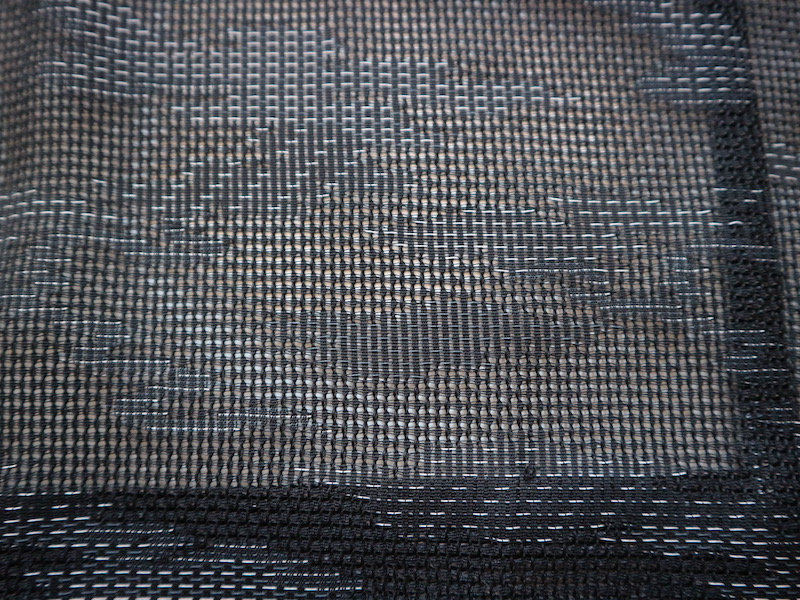Kimono Fabric
Rinzu 綸子

Rinzu 綸子, Japanese satin. Only warp threads or weft threads appear on the surface, and the feature is that the ground pattern is woven and although the fabric is not thicker than crepe, it is glossy and smooth to touch and soft.
Chirimen 縮緬

Chirimen 縮緬 crepe: For crepe, use plain untwisted warp and plain weave with strong twisted yarn as weft.
Ro 絽

Ro fabric is loosely woven from very fine silk threads, creating sheer, airy, summer kimono. Horizontal and vertical lines are shown by the gaps in the weave, created by braiding pairs of threads over one central thread.
Sha 紗

Sha is another woven silk gauze, typically used for unlined summer kimonos. Unlike in ro fabric, the threads are not braided, so there are no vertical or horizontal stripes caused by gaps in the weave. Sha fabric is therefore much stiffer.., and it is more transparent than a Ro and more casual than a Ro.
Ra 羅

Ro and Sha are loosely woven fabrics and their transparent fabric give a cool feeling, but La is particularly strong in those features. It looks like hand-knitted wool.
The word La originally refers to the catch net used for hunting small animals, and later came to be used for coarse-textured silk fabrics. From such a background, you can see it how Ra is a net-like material.
Habutae 羽二重

Habutae, also called 平絹(flat silk), is a plain weave fabric woven from untwisted raw silk, and is characterized by its flatness and smoothness.
Unlike Rinzu silk, it has no ground pattern. It is a luxury item used for crested Kimonolike a Kurohaori with Mon for official visiting, and is also used for the back of the kimono lining.
Shusu 繻子

Shusu is an abbreviation for satin weaving and is the basis of weaving.
Only warp threads or weft threads appear on the surface, and the feature is that the texture is smooth and glossy.
It is called satin in English and is often used for Obi and Tabi.
Donsu 緞子

Donsu is a Shusu weave with a clear pattern.
Dyed first, and weaving patterns by changing the colors of the warp and weft. The fabric is thick and heavy, and is a high-class fabric. It is glossy and smooth to the touch, and is often used for obi as well as kimono.